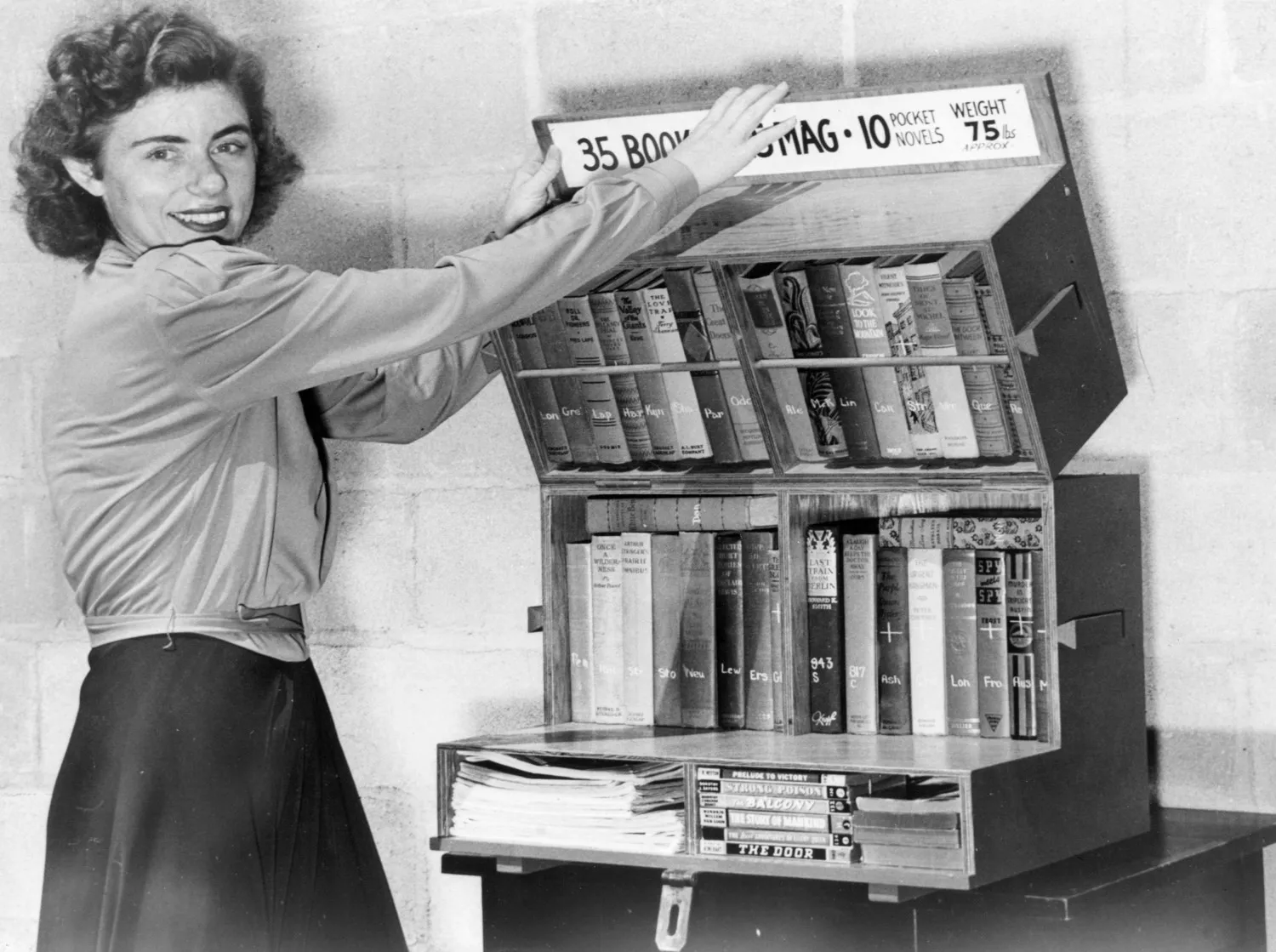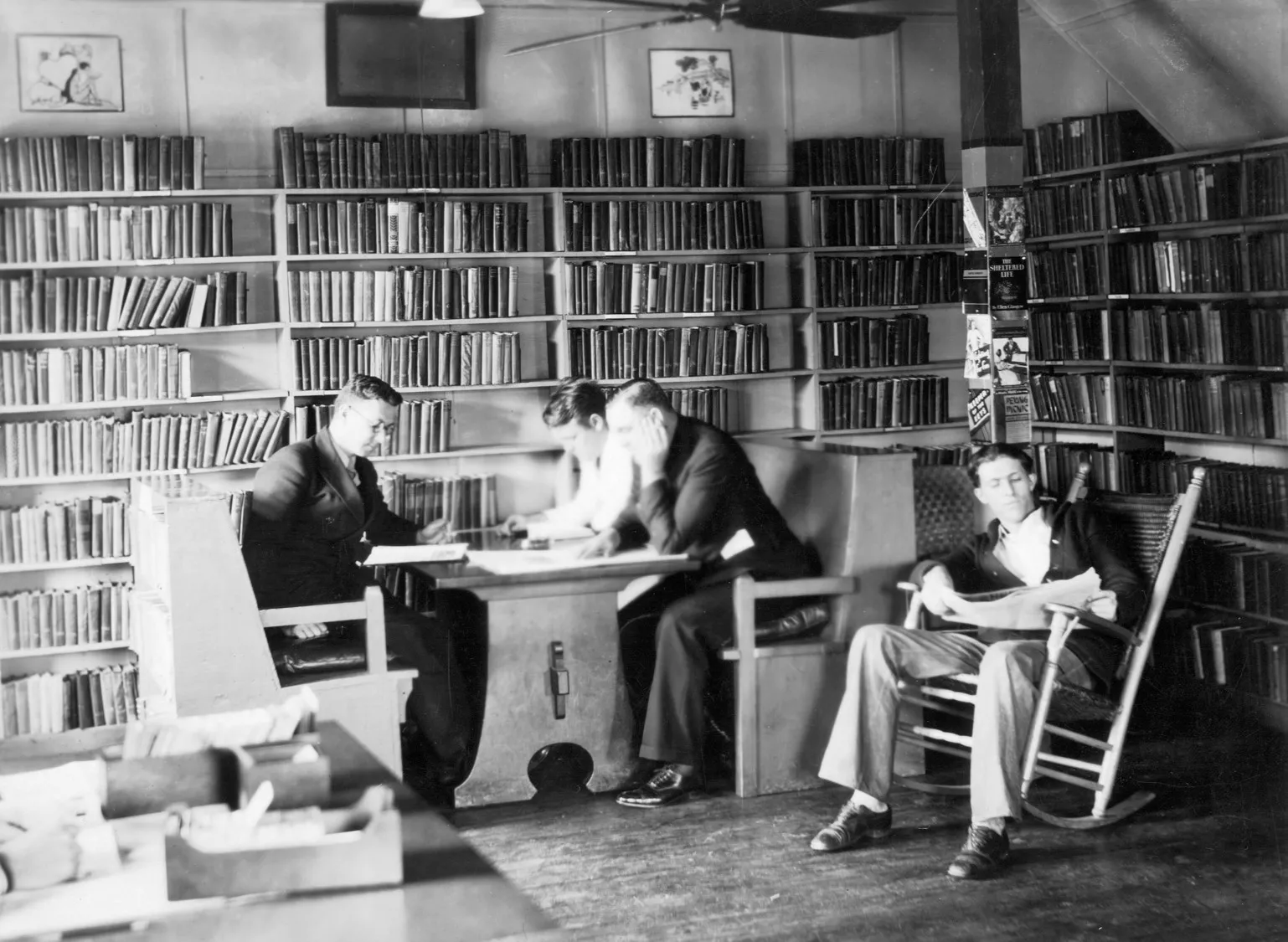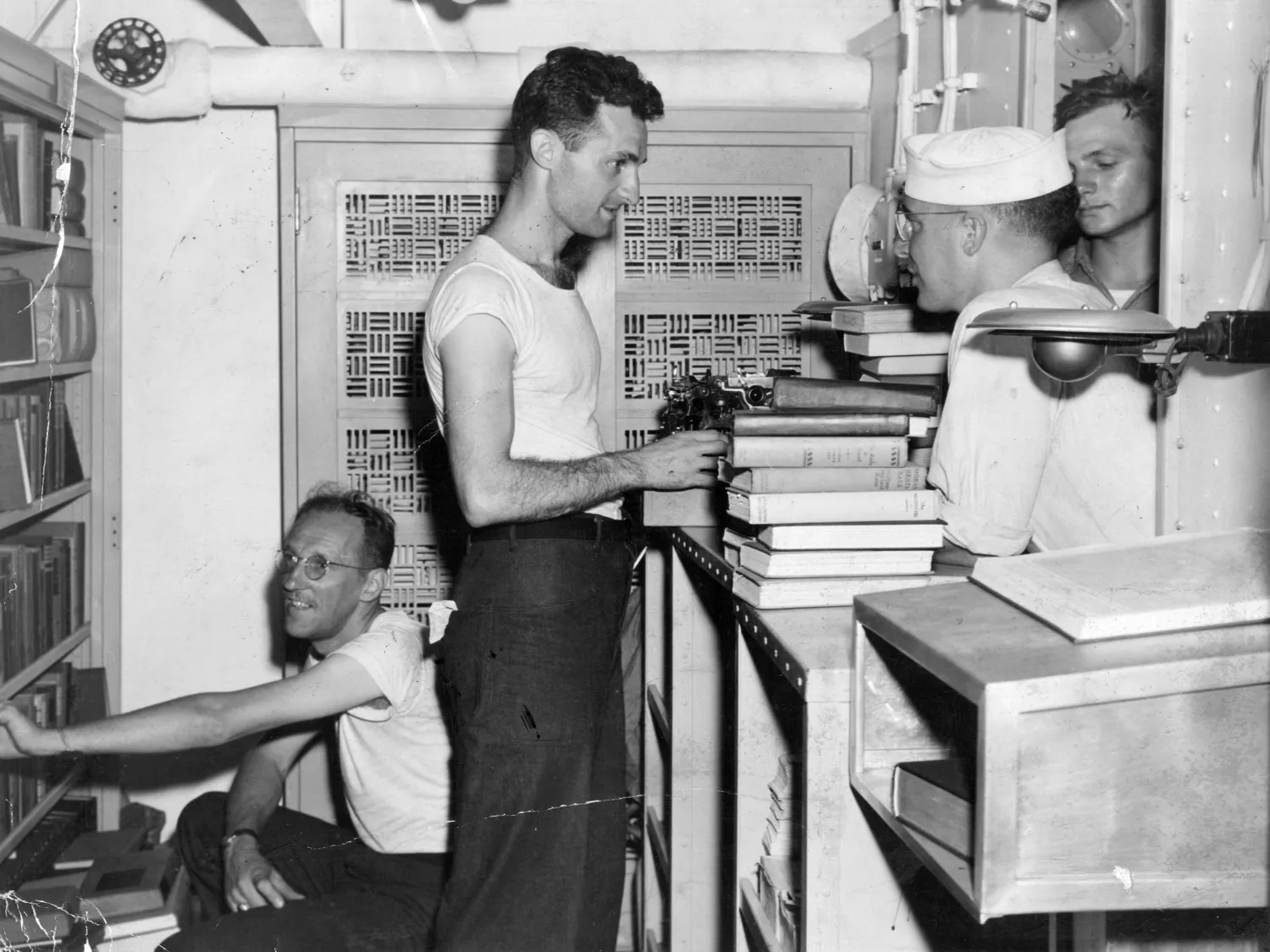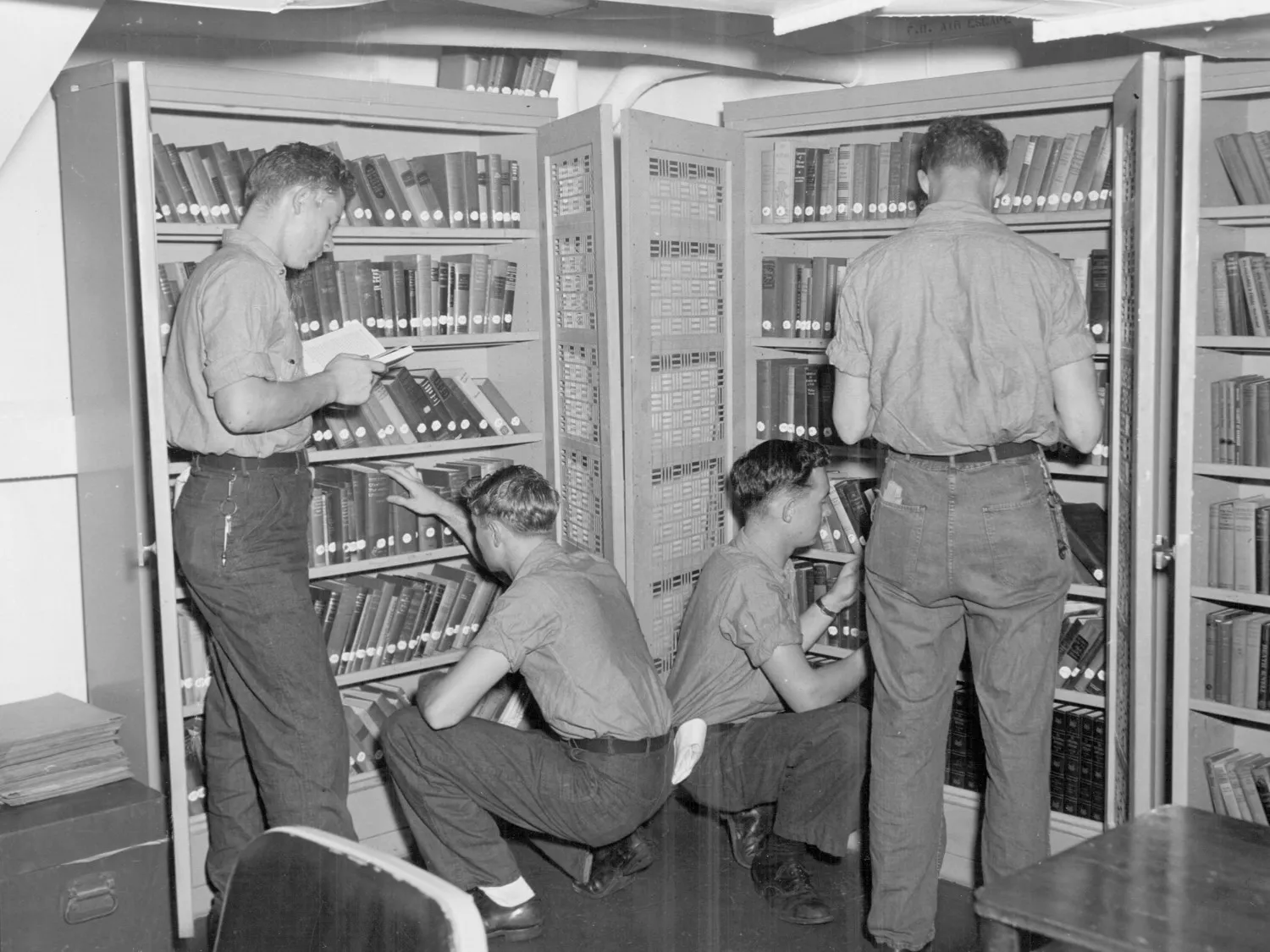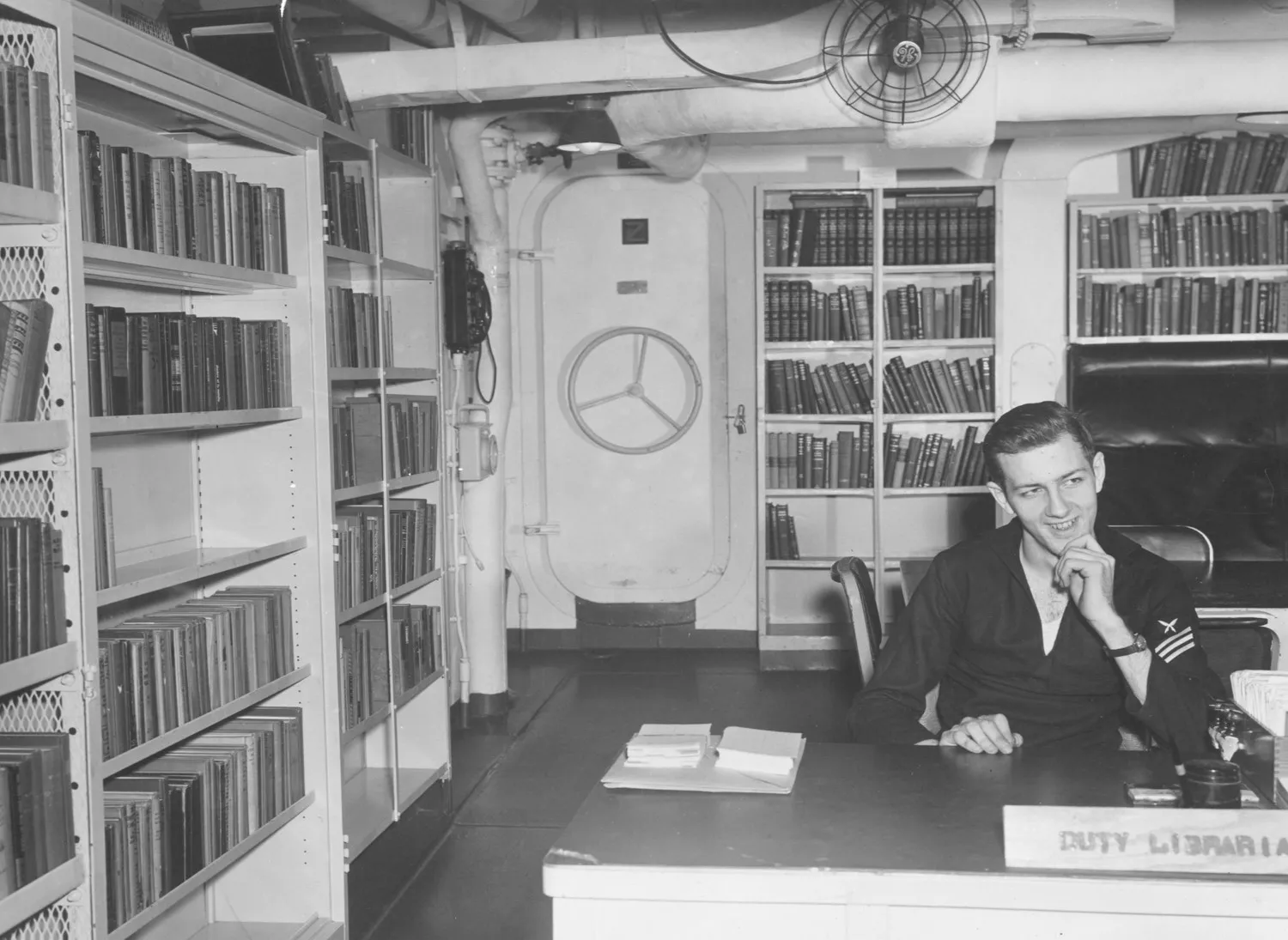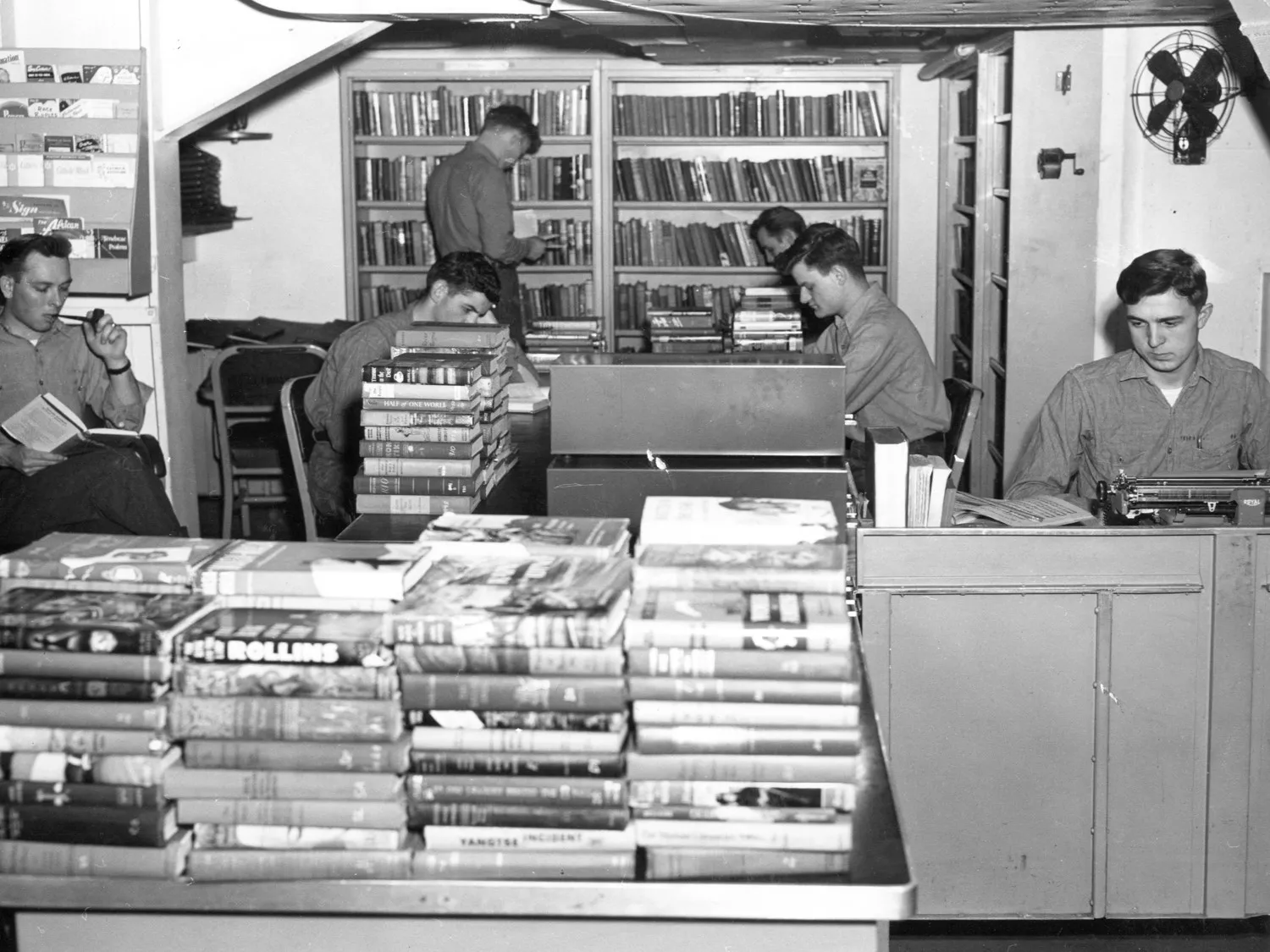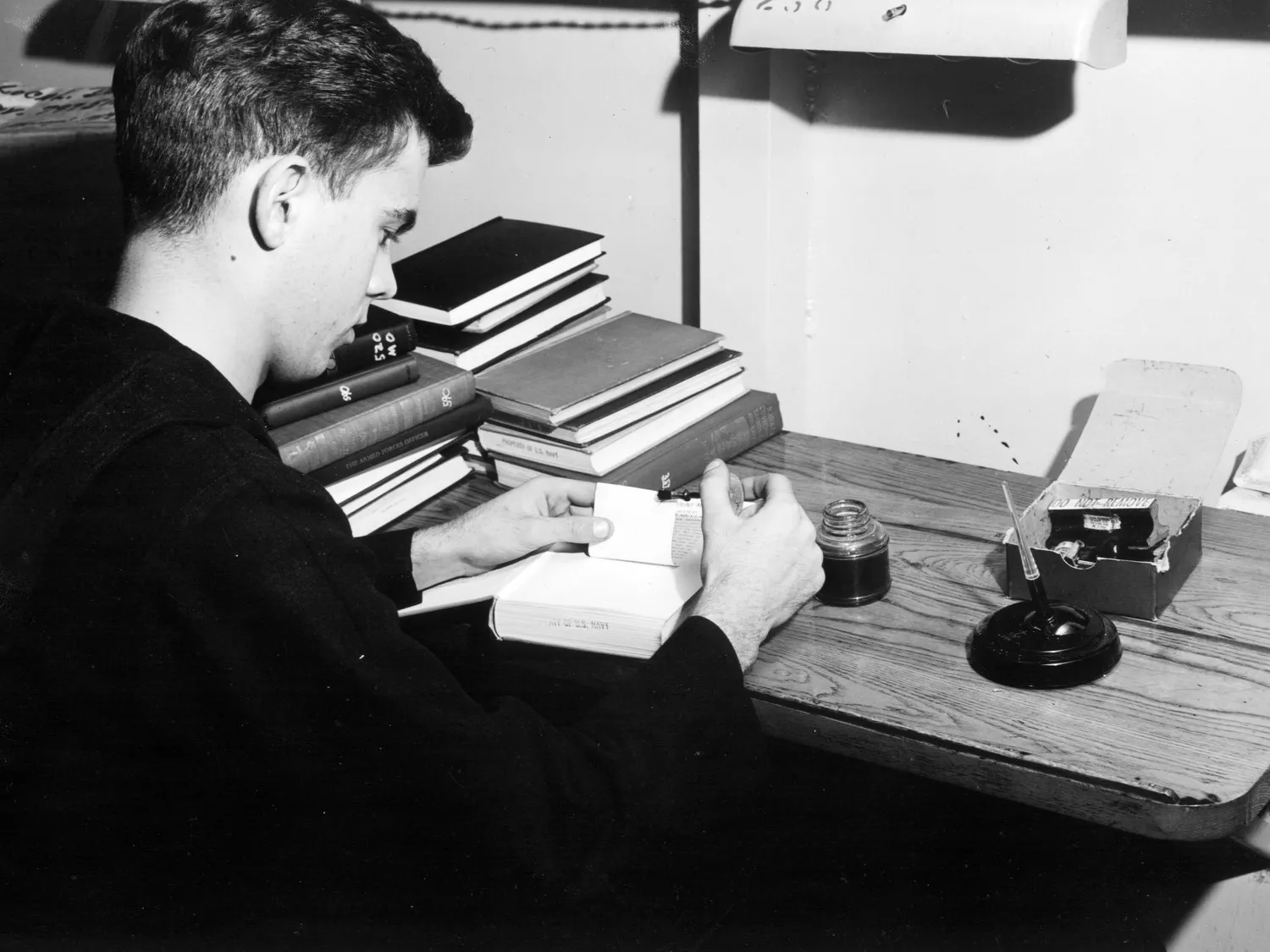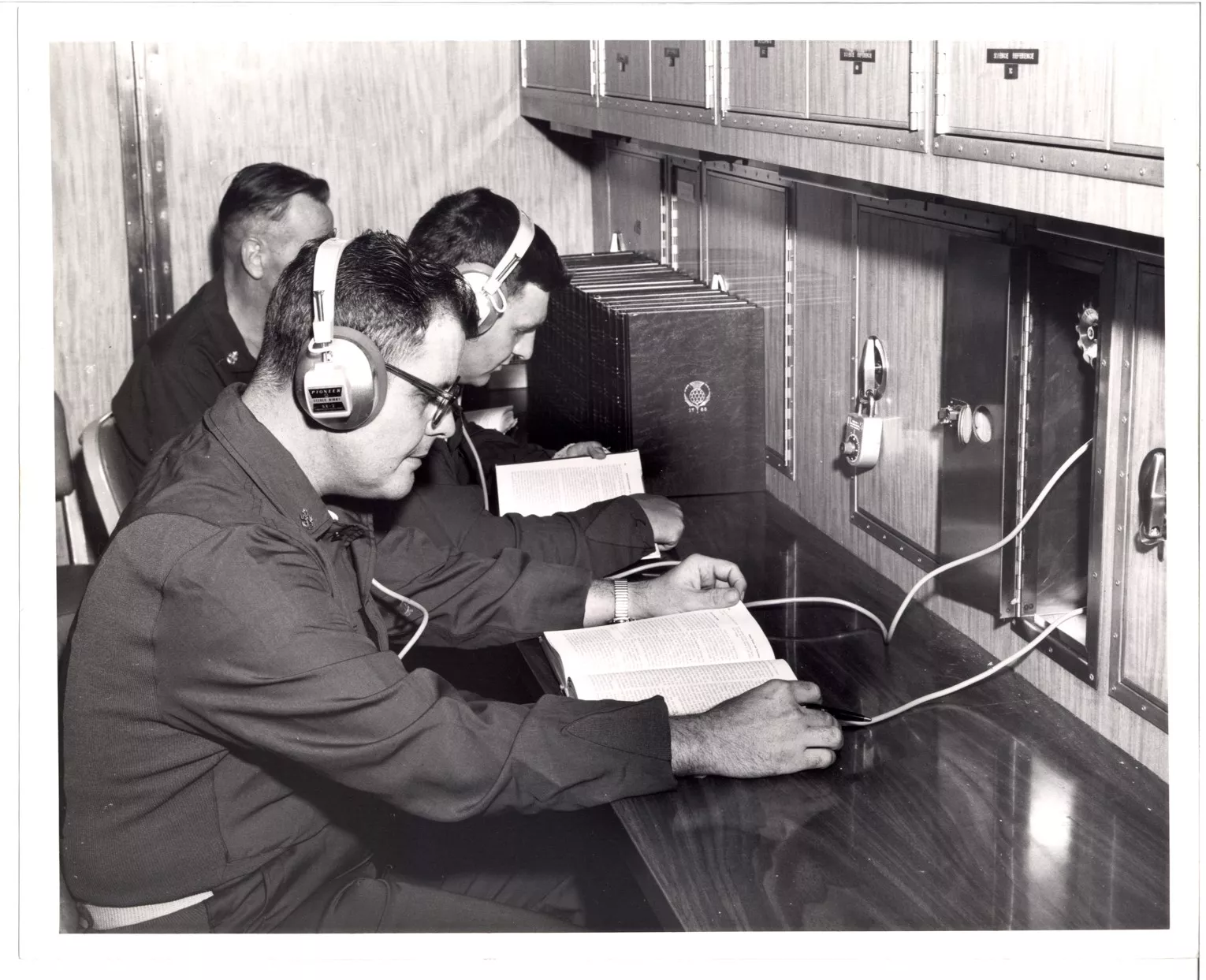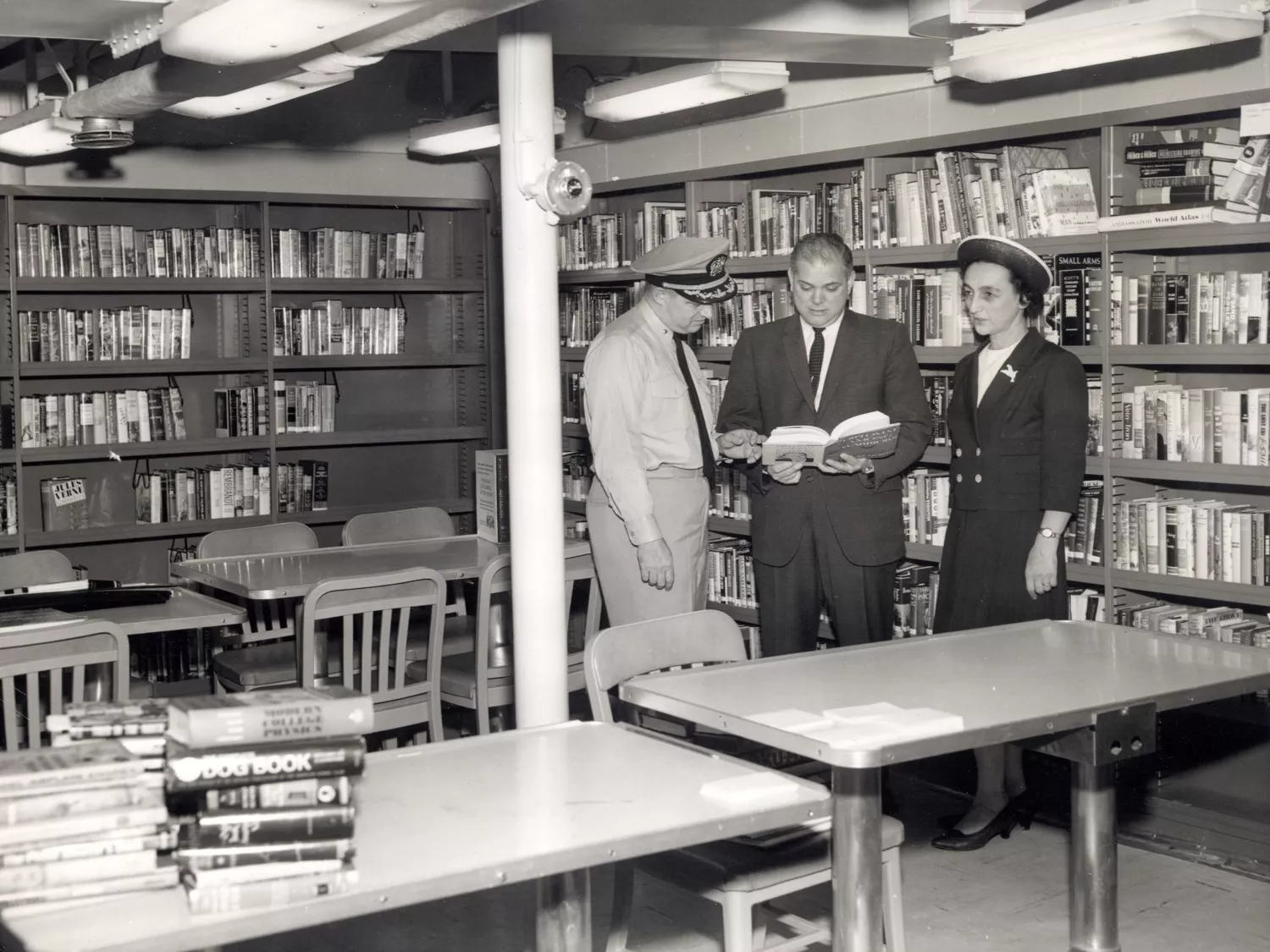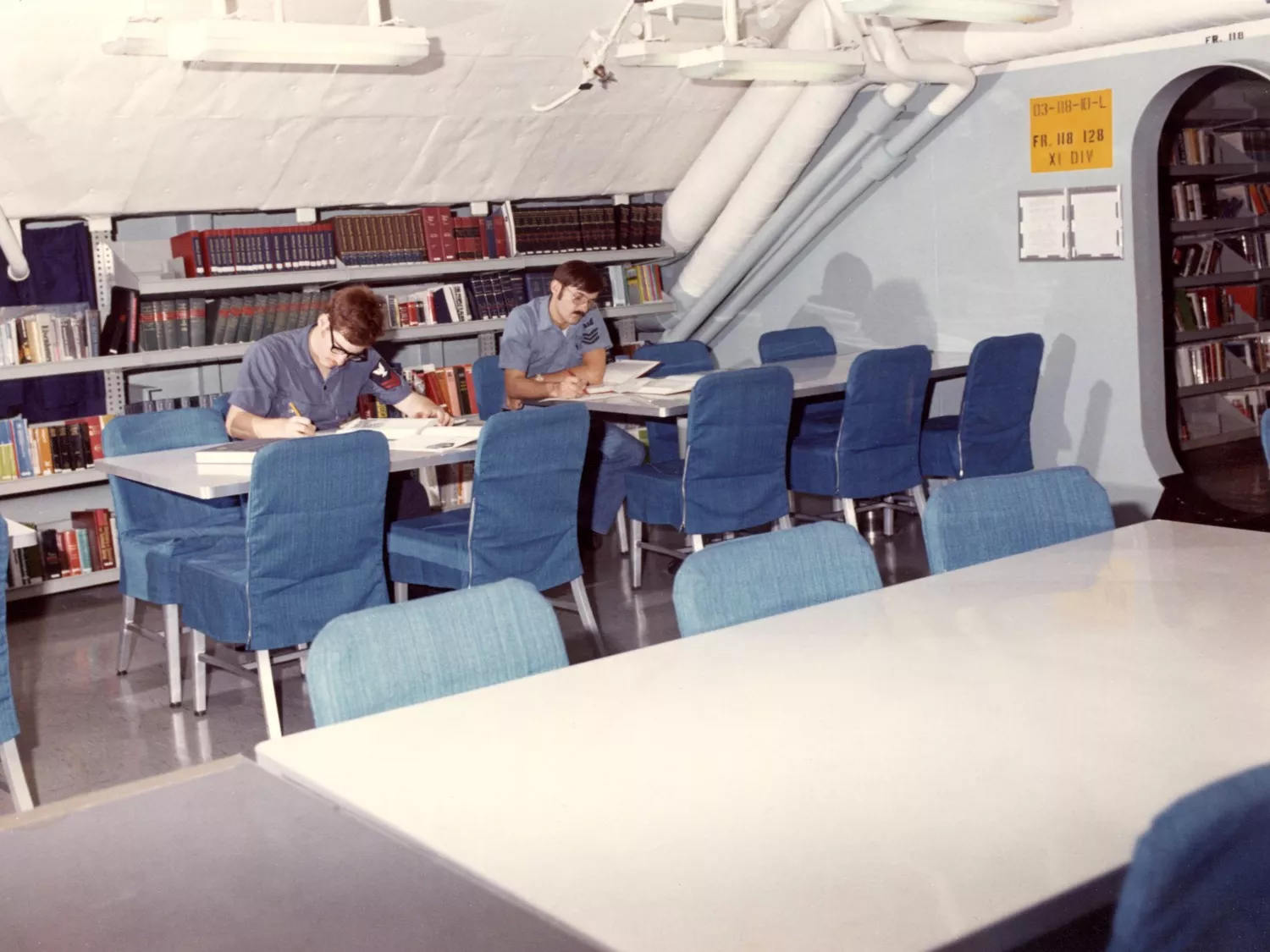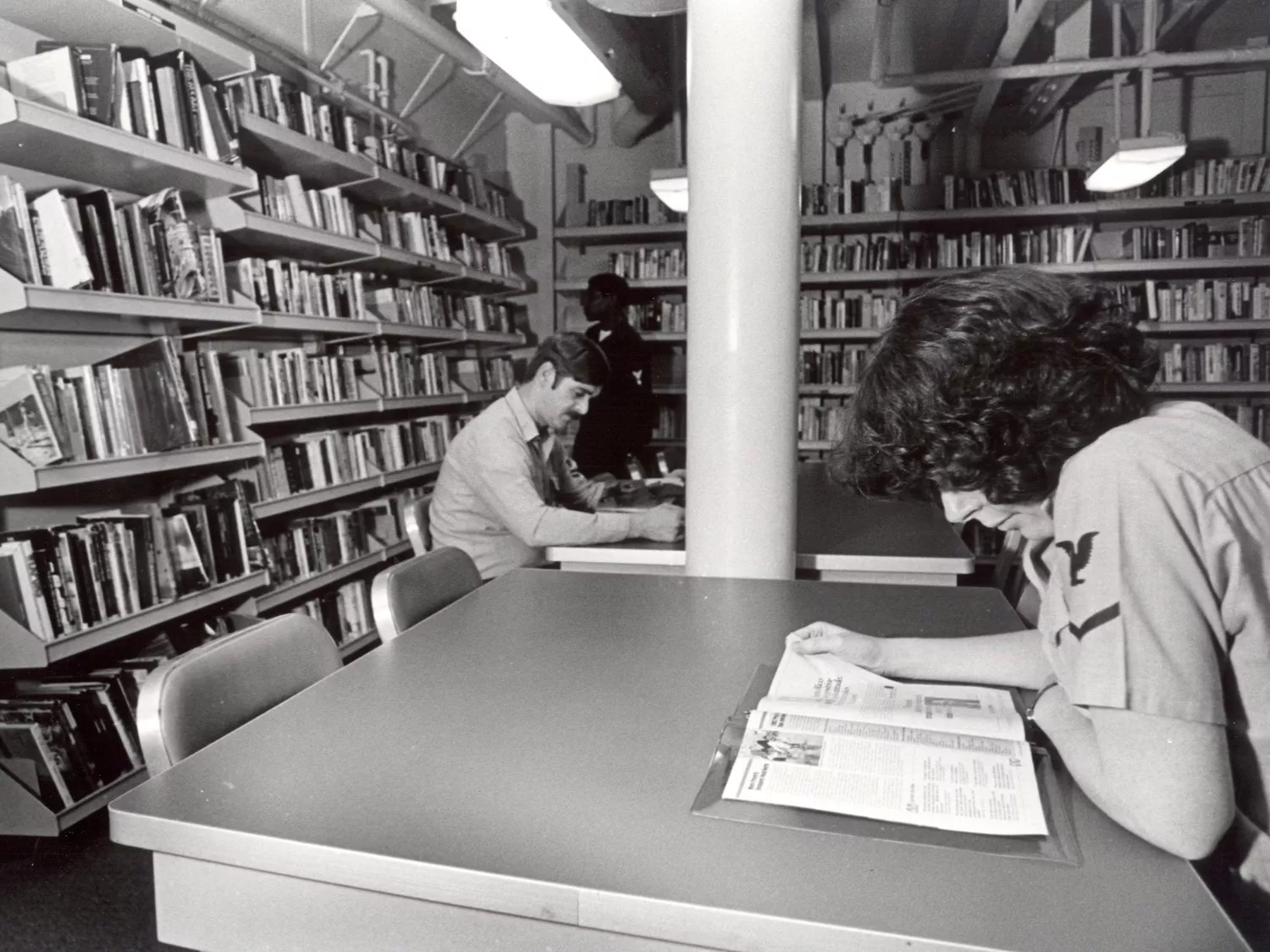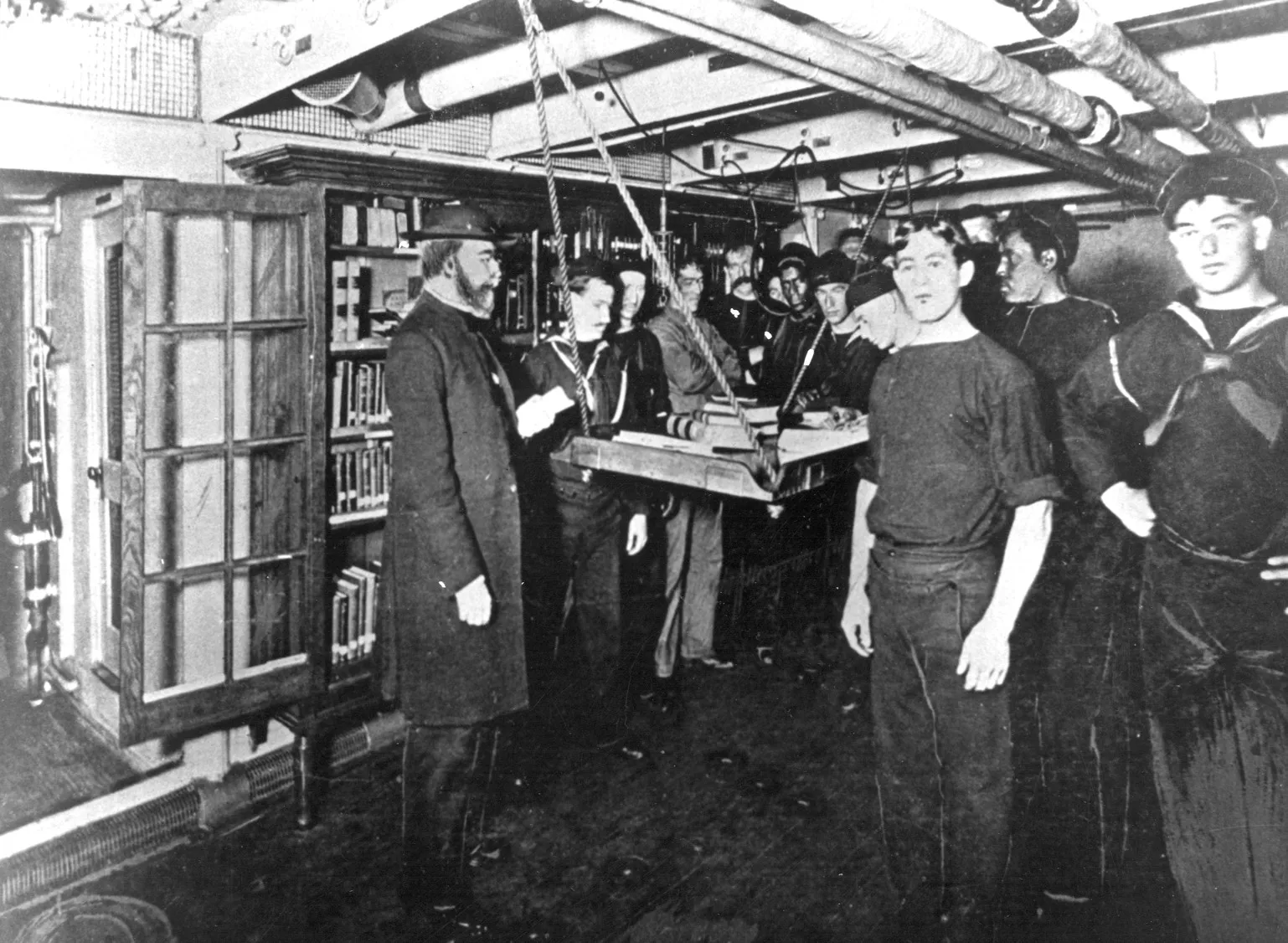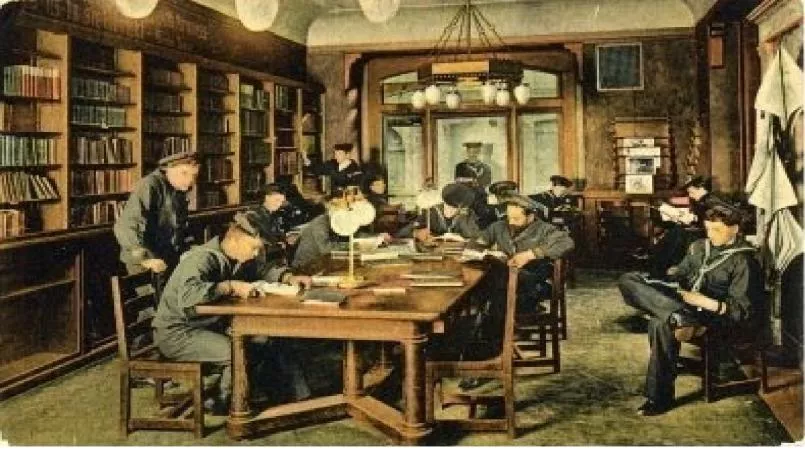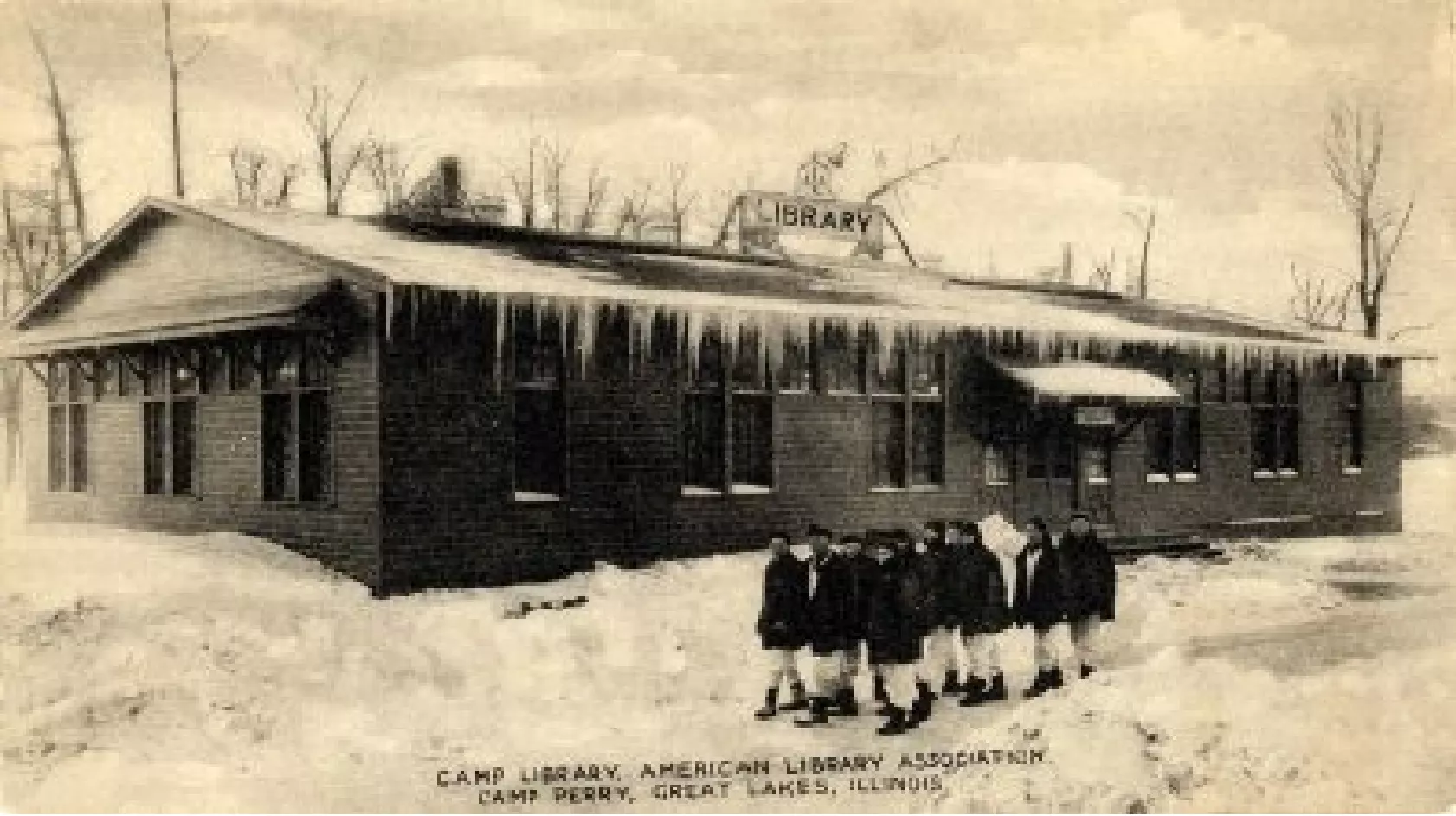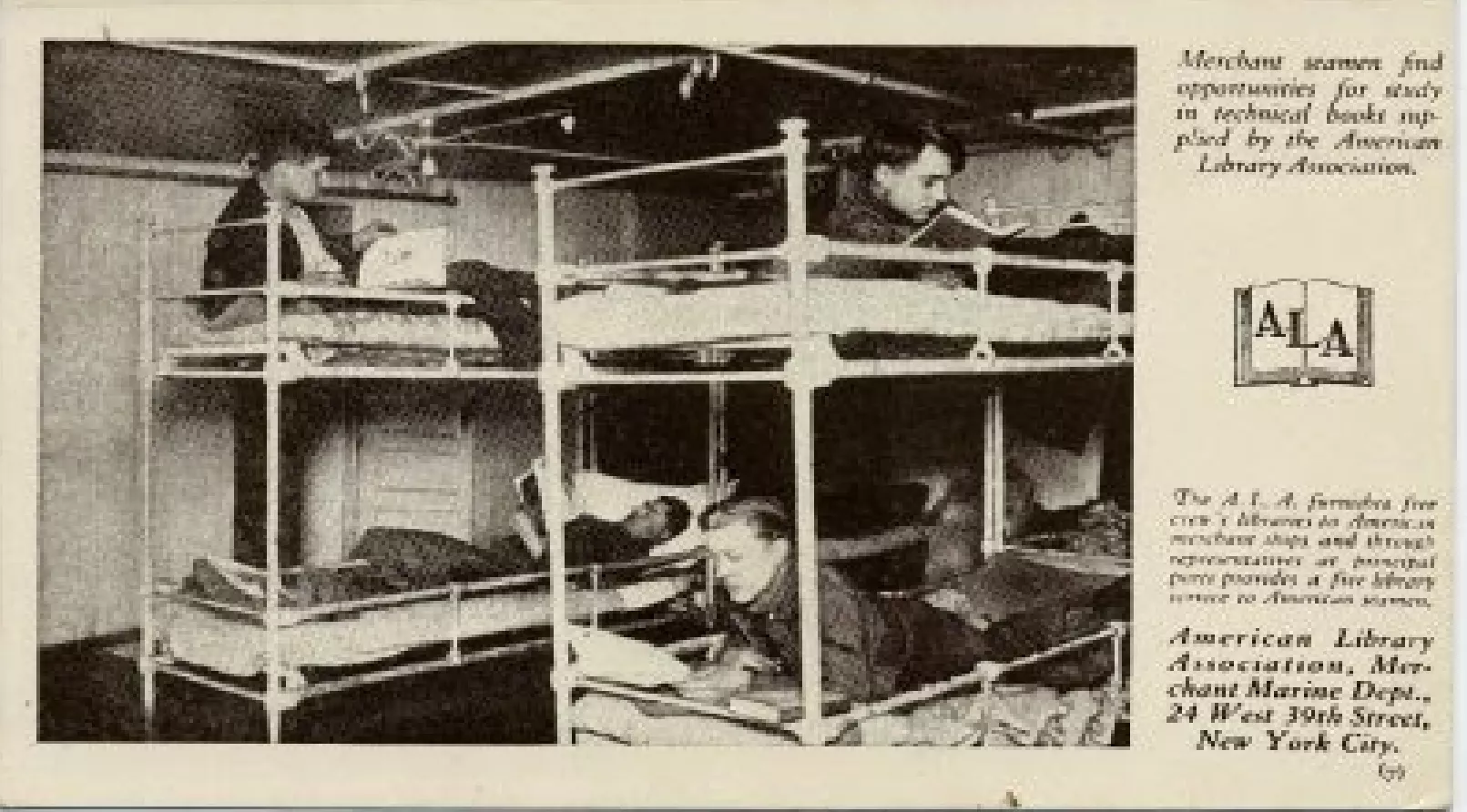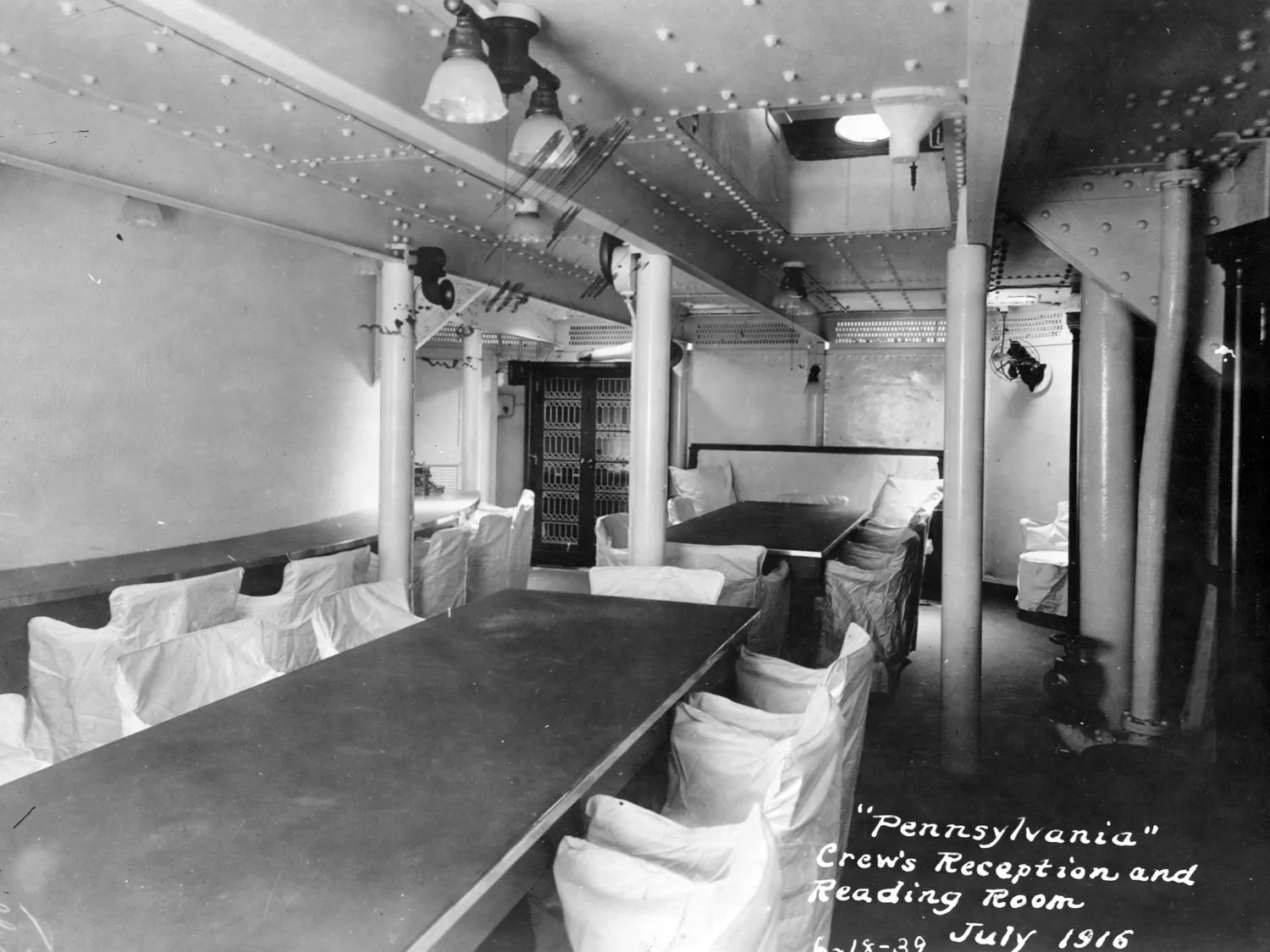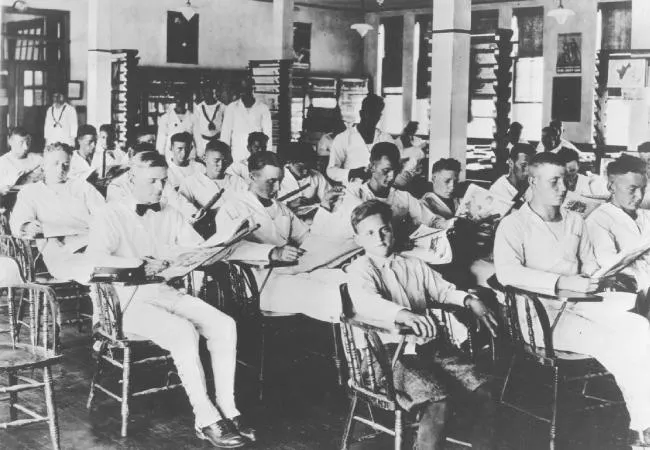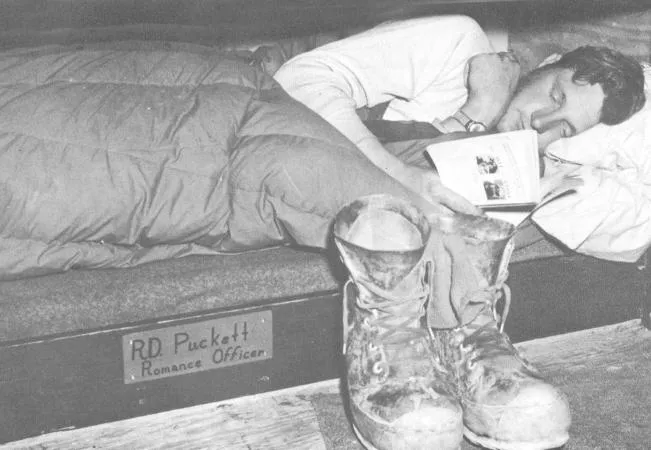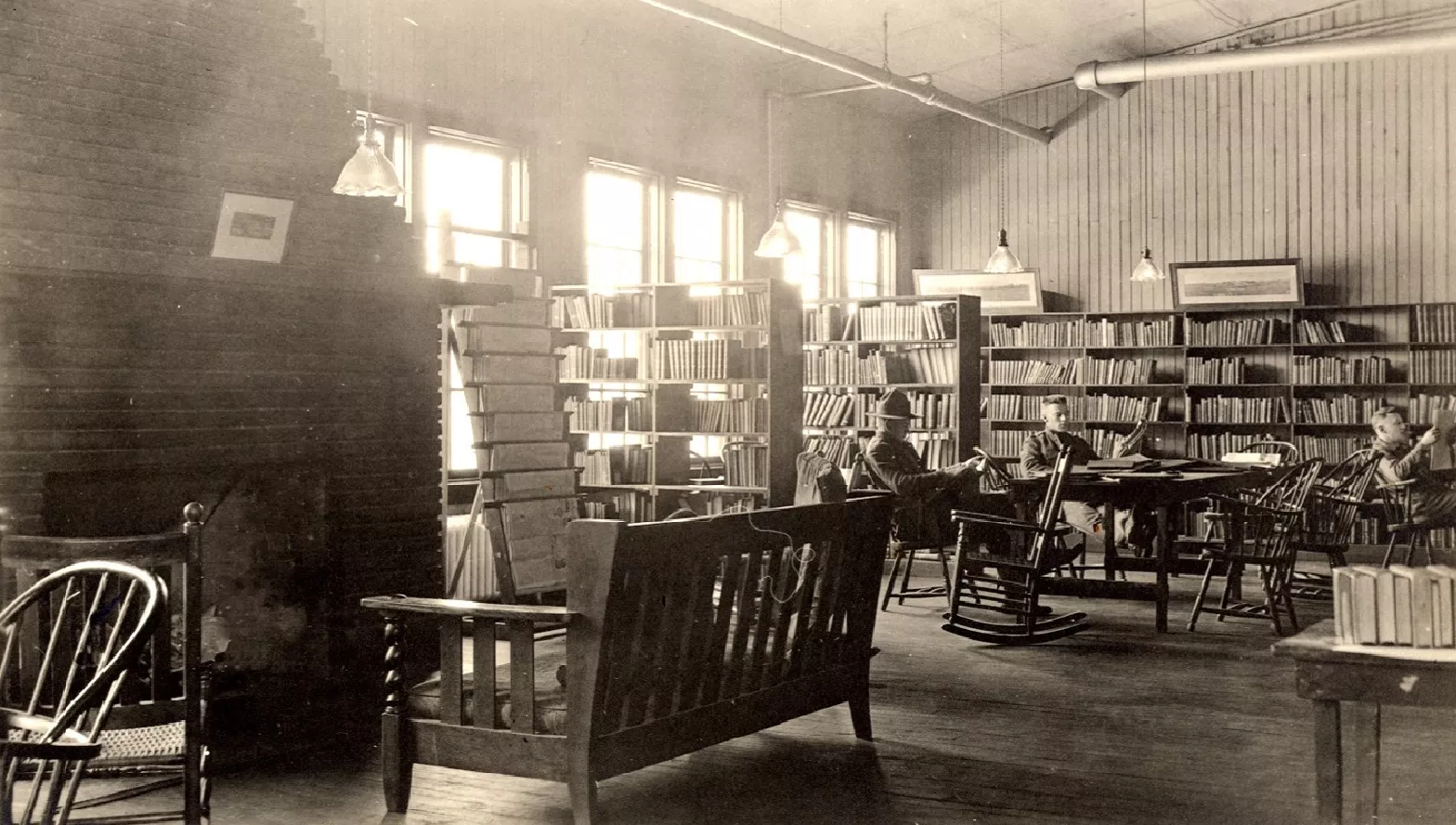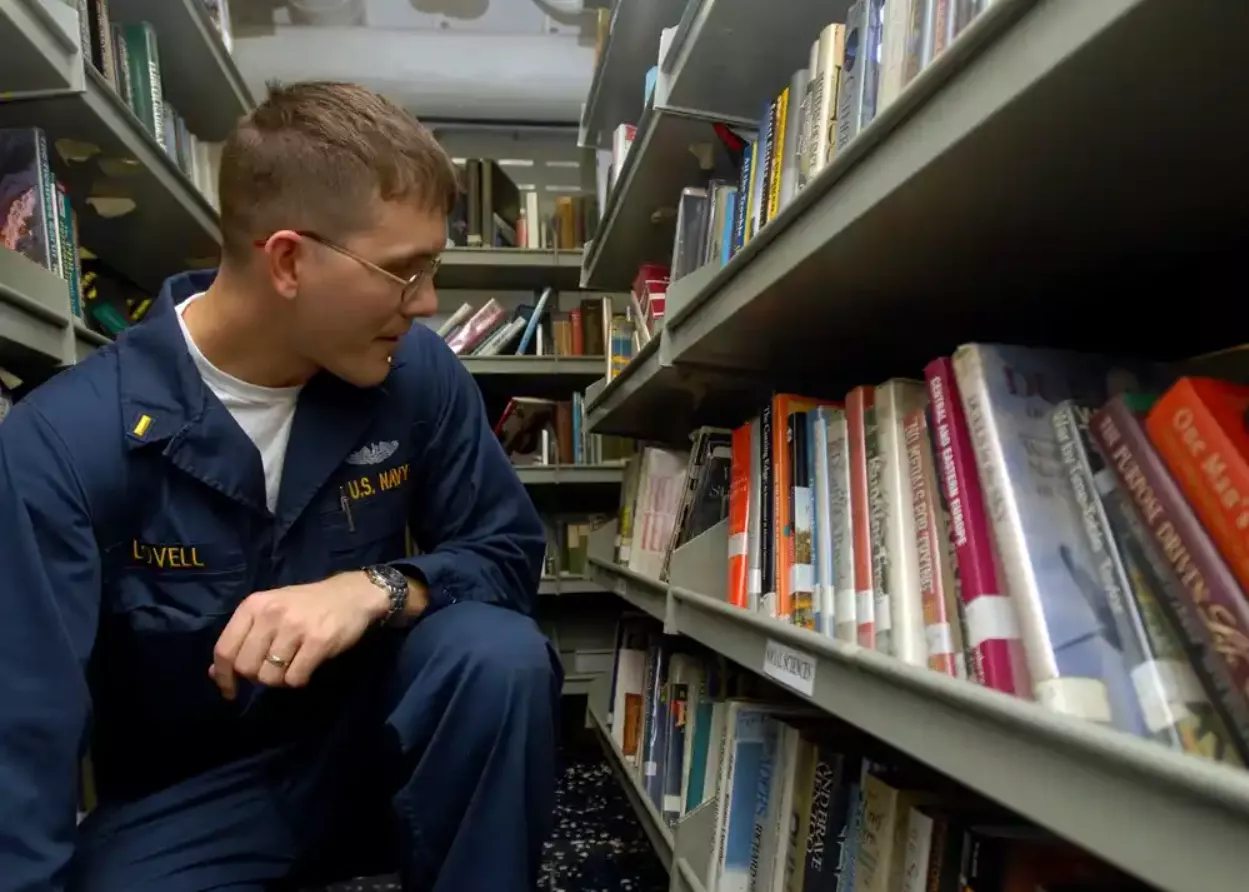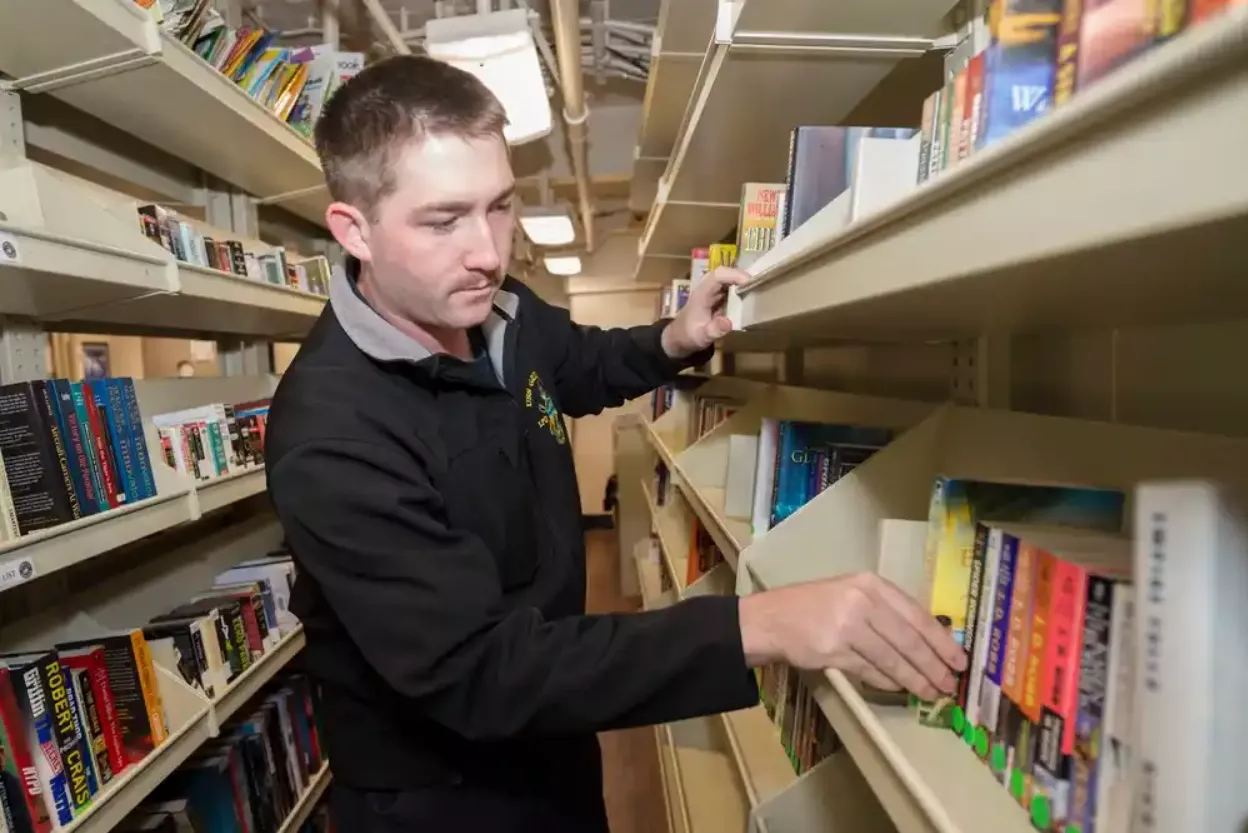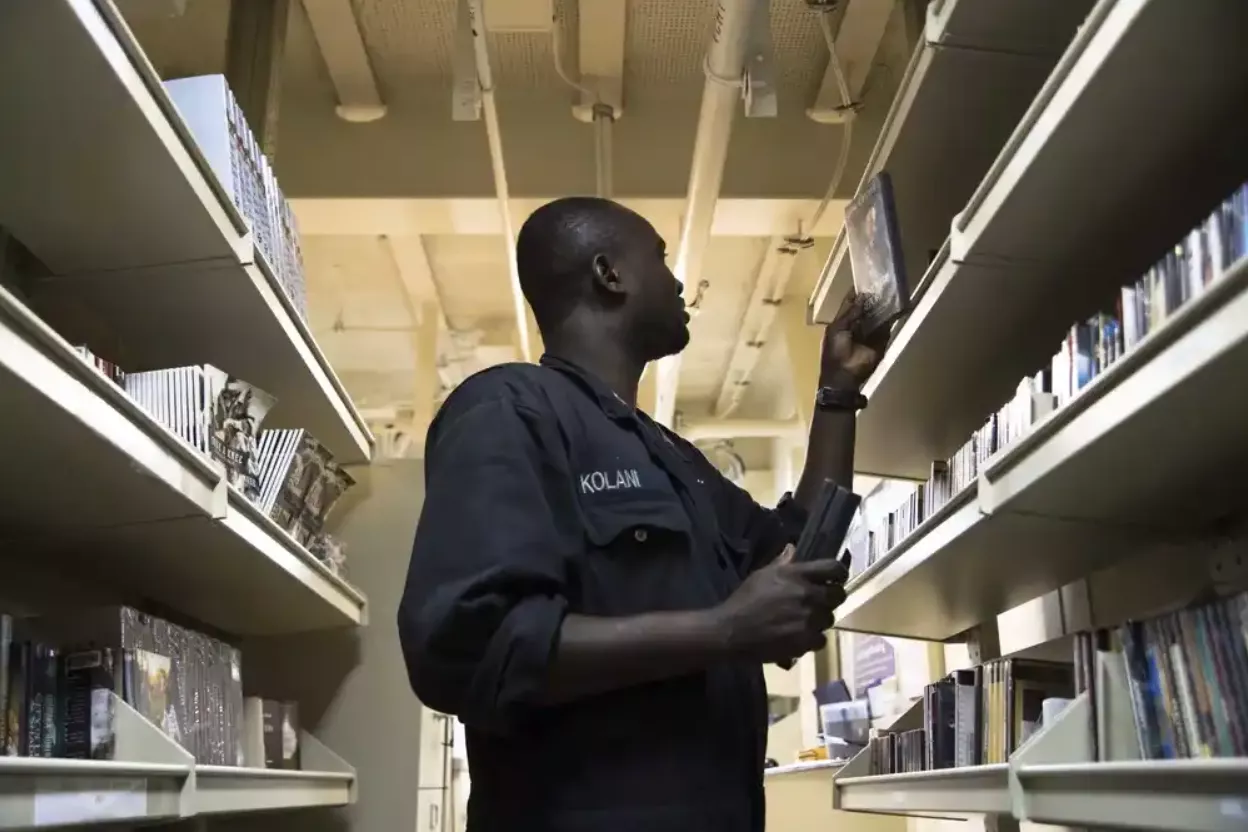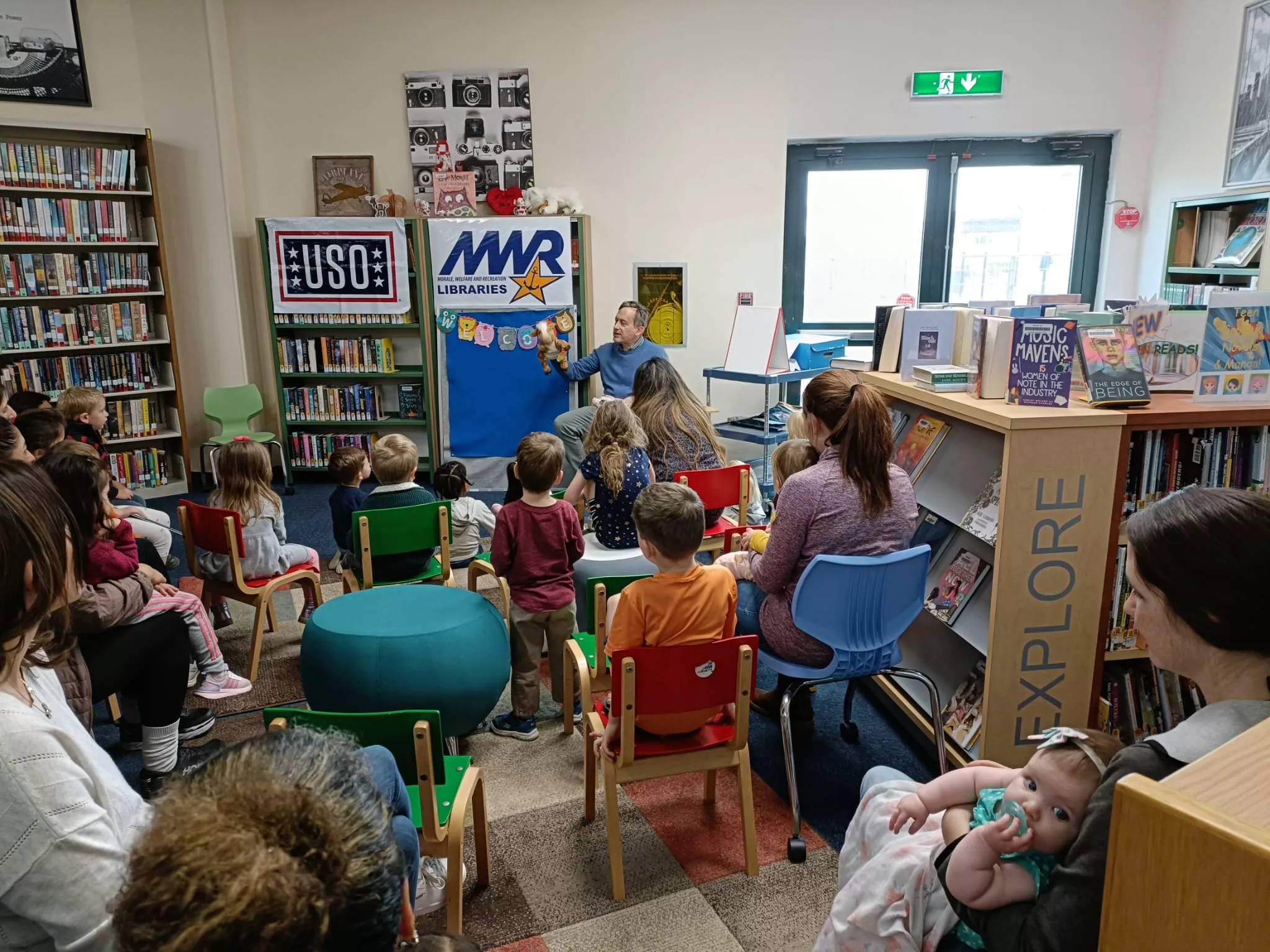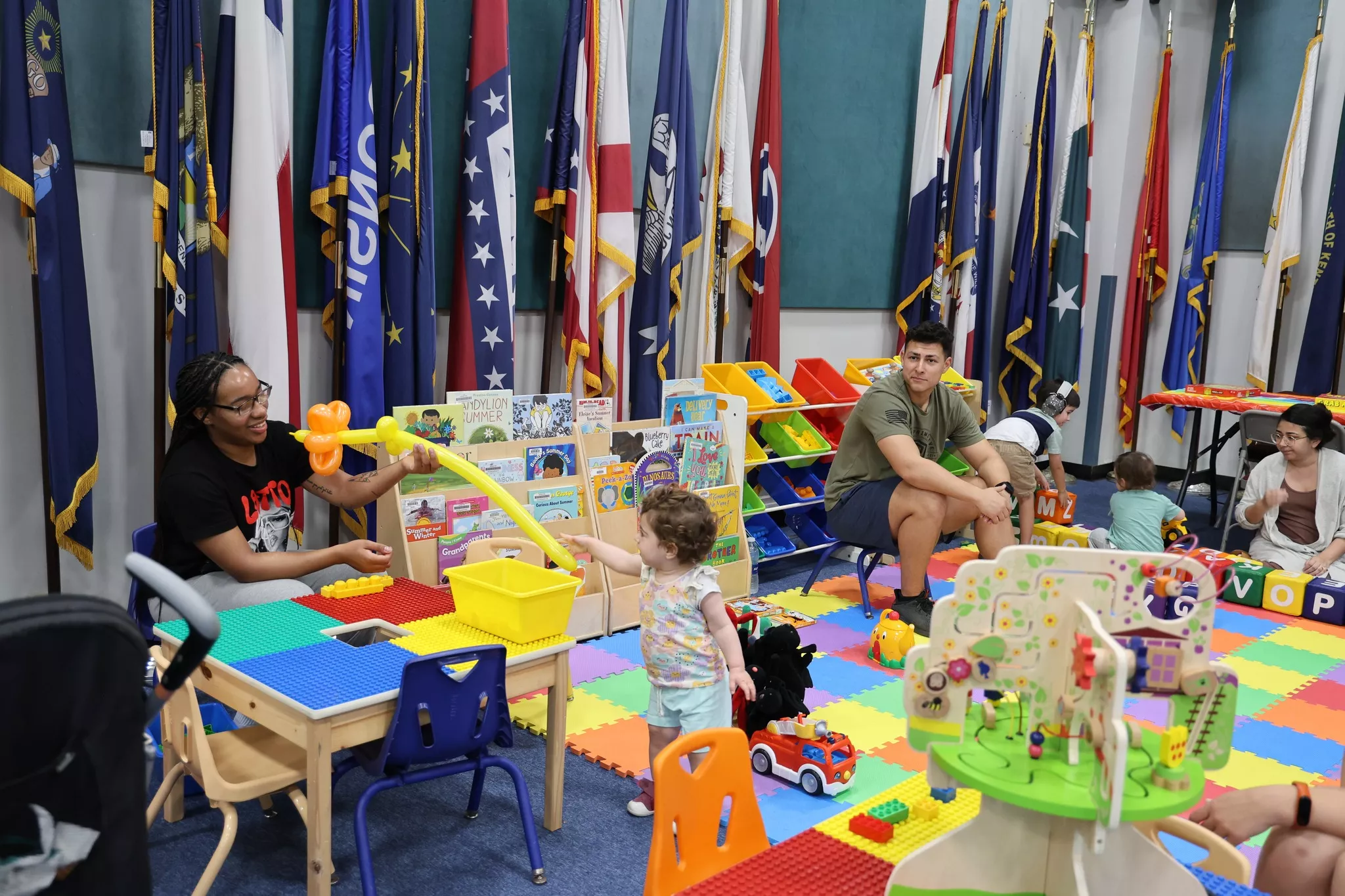Traveling library collection, popular in the 1930s and 40s
The history of Navy Libraries begins in 1820 with $800 and the USS Franklin. Donations from sailors bought about 1500 books, which required a compartment to be set aside for a library space and an crew-appointed librarian. The Franklin's success led to the beginning of government subsidized shipboard libraries in 1828, when funding provided two libraries per ship – one for officers and one for enlisted. These libraries were often overseen by the Chaplain, as is still popular on today's ships.
From a sailor on the USS Carolina in 1861: “In a more heroic vein, the seaman in charge of library No. 322 [...] was heard to shout to a pious shipmate as he left on an errand of mercy in the ship’s boat, 'If anything happens to the ship, be sure you save the library.'"
Herman Melville, author of Moby Dick, was a young sailor on the USS United States during the 1840s. He described the library books as being kept in a barrel, and to see what books were in the ship’s library, the barrel had to be dumped onto the deck. There were 36 standard titles on vessels of war in the 1830s-40s, including the Encyclopedia Britannica, two atlases, the Federalist Papers, the Bible, and various books on voyages, navigation, history, and law.
Between the end of WWII and now, we've seen political, social, and technological advancements revolutionize Navy Libraries. Our shore libraries have modernized and now offer digital catalogs that can be accessed from anywhere, innovative programming to help teach the Navy community about the world around us, and access to computers, virtual eResources, and more. Navy Libraries now operate on over 30 installations worldwide and we work directly with ships to ensure sailors not only have reading materials available while underway, but also audiobooks, DVDs, and training materials. Our mission is to connect our patrons with new ideas, information and experiences, and we are proud to serve Navy service members, civilians, and their families every day.
The period between the Civil War and the end of World War I was one of unparalleled growth for the Navy, and the men of the Navy were expected to educate themselves throughout their service. At the end of WWI, the Navy realized the value of libraries and asked the American Library Association for assistance in building a well organized system of libraries.
In 1919, the 6th Division of Bureau of Navigation, which oversaw library operations, was changed to the "Morale Division" -- creating the first modern Morale, Welfare and Recreation (MWR) program in the Navy. This change sparked a new era for Navy libraries:
- Annual budget of $60,000 for all ship libraries
- A traveling collection made available from the Fleet Supply Base, Brooklyn
- College courses offered on 15 vessels
By 1943, there were over 1,500 Navy libraries, both ashore and afloat. Congress appropriated $2,710,840 for a Library Program and began outfitting ships out of the Naval Supply Depots at Norfolk and San Diego. A typical ship’s collection at this time was 1/3 non-fiction and 2/3 fiction, with Westerns being the most popular genre. Libraries were also responsible for procuring other sources of entertainment for sailors: movies, radios, and even organizing sporting events.

